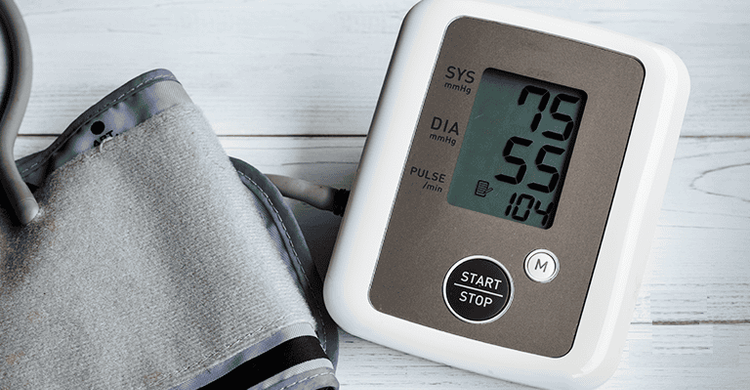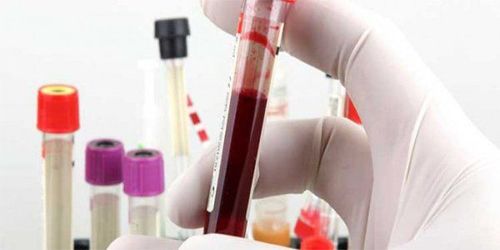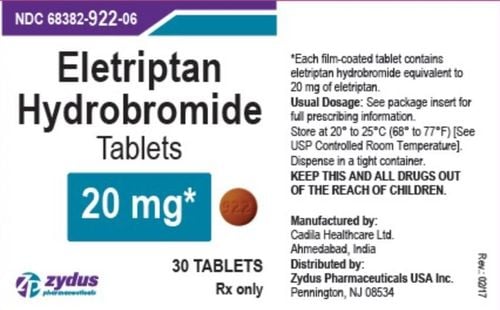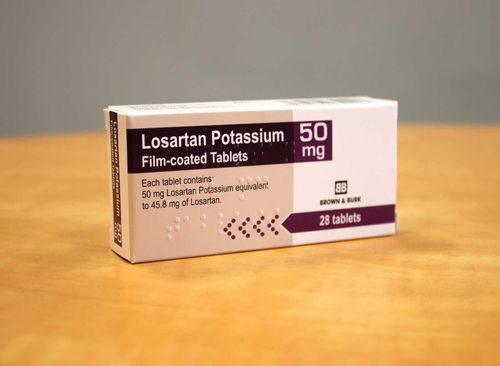This is an automatically translated article.
The article is professionally consulted by Master, Doctor Pham Van Hung - Department of Medical Examination & Internal Medicine - Vinmec Danang International General Hospital.
High blood pressure can lead to many dangerous complications in the heart, kidneys, brain, eyes and peripheral arteries. Diagnosis of damage caused by high blood pressure plays an important role in the timely detection and treatment of complications, contributing to protecting the patient's health.
1. Definite diagnosis of high blood pressure
The definition of hypertension is based on blood pressure values measured in the clinic and outside the clinic as follows:Blood pressure measured in the clinic: systolic blood pressure ≥ 140 mmHg and/or diastolic blood pressure ≥ 90 mmHg. Blood pressure measured by a 24-hour automatic sphygmomanometer: systolic blood pressure ≥ 130 mmHg and/or diastolic blood pressure ≥ 80 mmHg. Self-measured blood pressure (measured multiple times): systolic blood pressure ≥ 135 mmHg and/or diastolic blood pressure ≥ 85 mmHg.

2. Diagnosis of damage caused by high blood pressure by taking medical history
Doctors can diagnose high blood pressure and the damage caused by high blood pressure by learning about the patient's medical history. This method of hypertension examination includes:2.1 Exploit the time of high blood pressure, blood pressure values at that time (including home blood pressure measurement) 2.2 Find out the cause of secondary hypertension Family history have chronic kidney disease (polycystic kidney disease). History of kidney disease, urinary tract infection, hematuria, abuse of analgesics (renal parenchymal disease). Drugs that the patient had used such as licorice, oral contraceptives, cocaine, anti-nasal drugs, non-steroidal anti-inflammatory drugs, amphetamines, carbenoxolones, salt-water-metabolizing corticosteroids,... The patient had many seizures. sweating, anxiety, headache, palpitations (adrenal myeloma. The patient has multiple episodes of muscle weakness and tetany (hyperaldosteronism) The patient has symptoms suggestive of thyroid disease. 2.3 Understanding risk factors. Causes high blood pressure Family and personal history of hypertension, cardiovascular disease Family and personal history of dyslipidemia, diabetes, Smoking, eating habits Recent weight changes here, obesity Snoring, sleep apnea (ask spouse) Physical activity volume Low birth weight 2.4 Learn history and symptoms of target organ damage and heart disease Vascular Diseases of the brain and eyes: symptoms of headache, dizziness, transient ischemic attack, visual disturbances, sensory or motor deficits, stroke, regeneration carotid artery. Kidney disease: symptoms of thirst, frequent urination, nocturia, blood in urine. Cardiac disease: presenting with chest pain, dyspnea, myocardial infarction, ankle edema, syncope, coronary revascularization, history of palpitations, arrhythmia, especially atrial fibrillation. Diseases of the peripheral arteries: cold extremities, claudication, peripheral arterial revascularization. Cognitive disorder. History of snoring, chronic lung disease, sleep apnea. 2.5 Exploring the history of treatment of previous hypertension Current antihypertensive drugs. Previously used antihypertensive drugs. Efficacy and side effects of used drugs.

3. Diagnosis of damage caused by high blood pressure by physical examination method
A physical exam helps doctors confirm a diagnosis of high blood pressure, determine current blood pressure values, screen for secondary causes of hypertension, and assess cardiovascular risk. The diagnosis of hypertension is confirmed when blood pressure values through 2 measurements at at least 2 visits confirm hypertension.3.1 Manifestations of secondary hypertension Has features of Cushing's syndrome. Enlarged kidneys (polycystic kidney disease) are palpable. Skin showing signs of neurofibromatosis (melanoma). Hear an abdominal murmur (high blood pressure due to renal artery disease). A murmur is heard in the precordial region or chest wall (due to coarctation of the aorta, aortic valve disease, or upper extremity artery disease). The femoral pulse bounces slower than the radial pulse; no palpable pulse; blood pressure in the thigh lower than the blood pressure in the arm (due to coarctation of the aorta, aortic valve disease, or lower extremity artery disease). Blood pressure measured in the left and right arm is different (due to coarctation of the aorta, stenosis of the subclavian artery). 3.2 Manifestations of target organ damage Retina : abnormal retinoscopy, Brain : sensory or motor deficits. Cardiac: heart rate, third or fourth heart sound, arrhythmia, heart murmur, pulmonary rales, peripheral edema. Peripheral arteries: loss, decrease, bilateral irregular pulse, cold extremities, skin lesions due to ischemia. Carotid artery: there is a systolic murmur. 3.3 Manifestations of obesity Measure weight and height, calculate body mass index (BMI). Measure waist circumference in the standing position, between the lower border of the ribs and the upper border of the iliac crest.

4. Diagnosis of target organ damage by laboratory tests
Laboratory tests help detect secondary hypertension, whether there is target organ damage or not. Patients diagnosed with high blood pressure should undergo simple to complex tests. Specifically:4.1 Routine testing of Haemoglobin and/or haematocrit. Total cholesterol, LDL-C, HDL-C. Fasting blood sugar. Fasting triglycerides. Sodium and potassium in the blood. Blood creatinine (calculate glomerular filtration rate). Blood uric acid. Urinalysis: urinalysis, looking for protein, albumin in the urine. Record 12-lead electrocardiogram. 4.2 Additional testing Based on the history, physical examination, and results from routine laboratory tests, the physician may order the patient to perform the following additional tests:
HbA1c (if fasting blood glucose). > 5.6 mmol/L (102 mg/dL) or pre-diagnosed diabetes). Quantification of urine protein (if there is protein in the patient's urine), urinary sodium and potassium concentrations and their ratios. Monitor blood pressure at home and ambulatory blood pressure 24 hours. Echocardiography: 2D ultrasound, 3D ultrasound or Doppler echocardiography. Record a 24-hour ambulatory electrocardiogram if arrhythmia is present. Stress electrocardiogram. Carotid ultrasound. Ultrasound of peripheral arteries, abdominal arteries. Measure blood pressure readings of the ankles and arms. Measure the propagation velocity of the choroidal wave. Examine the bottom of the eye.

5. Detect asymptomatic target organ damage
Asymptomatic target organ damage plays a role in mediating the cascade of vascular diseases (including hypertension) and helps determine cardiovascular risk. Appropriate techniques will be performed to detect target organ damage such as:5.1 Heart Record electrocardiogram for patients with hypertension, help detect left ventricular hypertrophy, left atrial dilatation, turbulence arrhythmias or co-occurring heart diseases. Extended ECG monitoring is recommended for patients with a history or physical examination of signs of severe arrhythmia. In case of suspected exercise-induced arrhythmia, a stress ECG should be performed. Echocardiography: to screen for cardiovascular risk, confirm left ventricular hypertrophy, left atrial dilatation on electrocardiogram or co-occurring heart disease. For patients with suspected myocardial ischemia, it is necessary to do stress electrocardiogram, perform stress imaging tests (stress echocardiography, exercise magnetic resonance imaging, myocardial perfusion scan). 5.2 Arteries Carotid ultrasound is used to detect increased intima-media thickness or atherosclerotic plaques, especially in elderly patients. Measure the carotid-femoral wave propagation velocity to detect hardening of the great arteries. Measure ankle-brachial blood pressure to detect peripheral artery disease. 5.3 Eye Fundus examination for patients with difficult to control blood pressure or refractory hypertension. This method helps detect bleeding, exudation and papilledema - markers that increase the risk of cardiovascular complications.
5.4 Kidney Measure serum creatinine and estimate glomerular filtration rate. Determination of proteinuria with test strips. Determination of microalbuminuria. 5.5 Brain In hypertensive patients with cognitive impairment, computed tomography or brain magnetic resonance imaging (MRI) should be performed to detect the risk of silent ischemic stroke, lacunar infarct, microbleeding, and lesion status. White matter.
6. Detect the cause of secondary hypertension
6.1 Renal parenchymal disease Clinical history: urinary tract infection or obstruction, hematuria, abuse of analgesics, family history of polycystic kidney disease. Physical examination: palpable abdominal mass (polycystic kidney disease). Laboratory examination: urine test shows protein, red blood cells or white blood cells; decreased glomerular filtration rate; Confirm the diagnosis by renal ultrasonography. 6.2 Renal artery stenosis Clinical history: early onset hypertension in patients with renal artery stenosis due to fibromuscular dysplasia; Sudden onset of high blood pressure, difficult to control, and acute pulmonary edema in patients with renal artery stenosis due to atherosclerosis. Physical examination: a murmur is heard in the abdomen. Subclinical examination: ultrasound shows that the size of the two kidneys is irregular, about 1.5cm apart; kidney function rapidly declines; renal angiography by magnetic resonance imaging, spiral computed tomography, digitized background deletion; Doppler ultrasound of the renal artery to confirm the diagnosis. 6.3 Primary hyperaldosteronism Clinical history: muscle weakness, family history of hypertension and cerebrovascular events before age 40 years. Physical examination: arrhythmia in the presence of severe hypokalemia. Laboratory examination: hypokalemia (spontaneous or diuresis), incidental detection of adrenal tumor, aldosterone/renin ratio calculation under standard conditions, diagnostic confirmation test (sodium ingestion, infusion). saline solution, oral captopril) and adrenal computed tomography. 6.4 Pheochromocytoma: Clinical history: exacerbation of hypertensive crisis or severe hypertension on the background of pre-existing hypertension, sweating, headache, palpitations, pallor, family history of myeloma adrenal. Physical examination: skin showed signs of neurofibromatosis, discovered adrenal tumor incidentally. Laboratory examination: measure the concentration of fractionated metanephrine in the urine or the concentration of free metanephrine in the blood; computed tomography, magnetic resonance of the abdomen and pelvis. 6.5 Cushing's syndrome Clinical history: rapid weight gain, increased thirst, polyuria, mental confusion. Physical examination: body has typical appearance such as fat, round face, buffalo hump, hirsutism,... Paraclinical examination: hyperglycemia, 24-hour urinary cortisone excretion and dexamethasone suppression test. Diagnosis of high blood pressure and target organ damage is important for timely and effective detection and treatment, and to reduce the risk of complications. Therefore, the elderly should regularly check their blood pressure at home and have regular health check-ups to promptly detect and treat high blood pressure.Master, Doctor Pham Van Hung has 30 years of experience in examination and treatment of internal diseases, especially in Cardiology: coronary arteries, heart failure, heart valves, arrhythmias. ..Master, Doctor Hung used to hold the position of Deputy Head of Internal Cardiology Department and Head of Interventional Cardiology Unit at Da Nang General Hospital and is currently working at Department of Examination and Internal Medicine, Internal Cardiology, Cardiology. Interventional circuit at Vinmec Da Nang International General Hospital.
Currently, Vinmec International General Hospital is implementing the Hypertension Checkup Package, which helps to identify the causes, complications and levels of hypertension.
Please dial HOTLINE for more information or register for an appointment HERE. Download MyVinmec app to make appointments faster and to manage your bookings easily.














